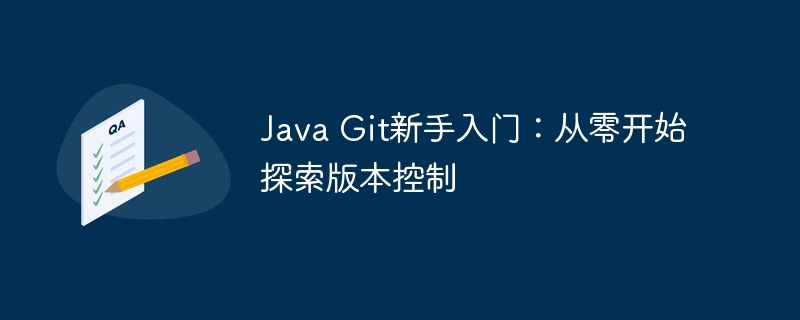Home >Java >javaTutorial >Getting Started with Java Git: Exploring Version Control from Scratch
Getting Started with Java Git: Exploring Version Control from Scratch
- 王林forward
- 2024-02-23 10:25:061329browse

git Introduction
Java Git for beginners: Explore version control from scratch. In today's software development field, version control is a crucial link. As one of the most popular version control tools currently, Git provides developers with a convenient and efficient way to collaborate. This article is carefully written by php editor Xigua. It will introduce you to the basic concepts, common commands and practical application skills of Git in detail, helping novices quickly master the use of Git. Let’s start this journey of exploring version control together!
Install Git
To use Git, you need to install it on your computer first. You can download the installer for your operating system from the Git official website. After the installation is complete, you can enter git --version in the command line to check whether the installation is successful.
Git basic concepts
- Repository: The code base in Git is called a repository. It can be a folder that contains all project files and other information required for Git management.
- Version: Git will create a new version (commit) for each code submission. Each version has a unique version number (SHA-1 hash).
- Branch: A branch in Git is a set of snapshots in the code base. You can create multiple branches to work on different development tasks simultaneously.
- Commit: Submit (commit) refers to the process of saving code changes to the repository. Each commit creates a new version.
- Push: Push refers to the process of pushing local code changes to the remote code base.
- Pull: Pull refers to the process of pulling the latest code changes from the remote code base.
Use Git
To start using Git, you need to first create a new Git repository. You can use the following command to create a new Git repository in the current directory:
git init
This will create a .git directory in the current directory. This directory contains all the information needed for Git management.
Next, you need to add your code files to the Git repository. You can add all files to the Git repository using the following command:
git add .
This will add all files in the current directory to the Git repository.
After adding the files, you need to commit these changes to the Git repository. You can commit your changes using the following command:
git commit -m "Initial commit"
This will commit all added files in the current directory to the Git repository. The -m option specifies the commit message.
After committing your changes, you can push local code changes to the remote code base. You can push local code changes to the remote code base using the following command:
git push origin master
This will push code changes from the local master branch to the origin/master branch in the remote repository.
To pull the latest code changes from the remote code repository, you can use the following command:
git pull origin master
This will pull the latest code changes from the origin/master branch in the remote code base to the local master branch.
Summarize
Git is a powerful version control tool that helps you track code changes and collaborate easily. This article introduces the basic concepts, installation and use of Git, allowing you to quickly get started with version control. I hope you can learn the basic knowledge of Git through this article and apply it to your projects.
The above is the detailed content of Getting Started with Java Git: Exploring Version Control from Scratch. For more information, please follow other related articles on the PHP Chinese website!

